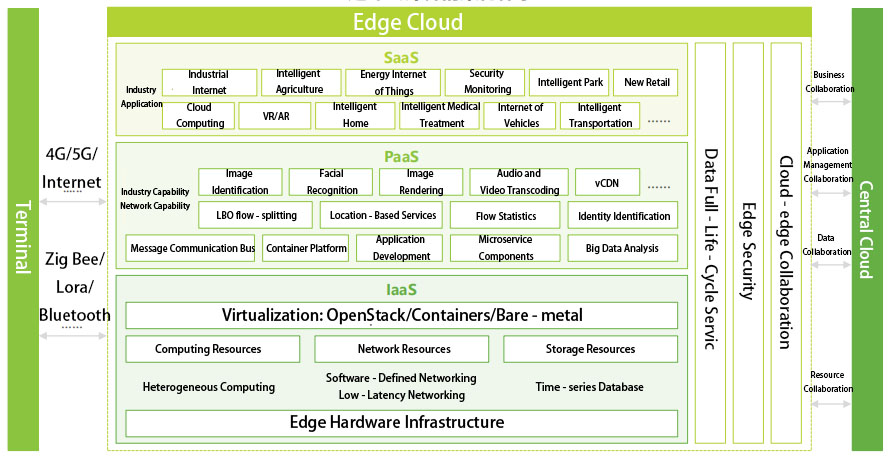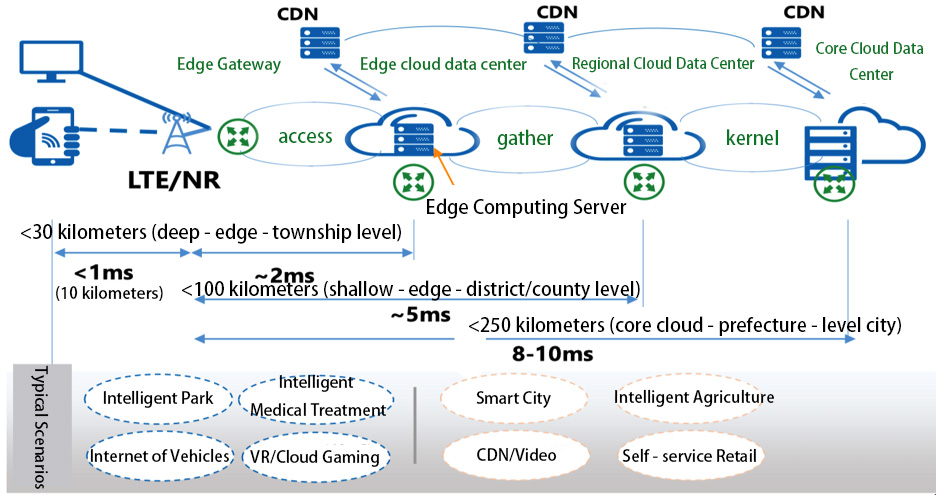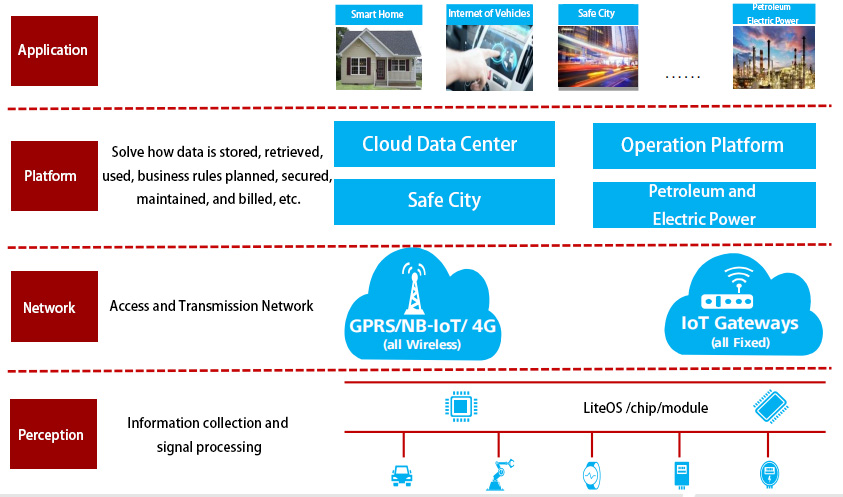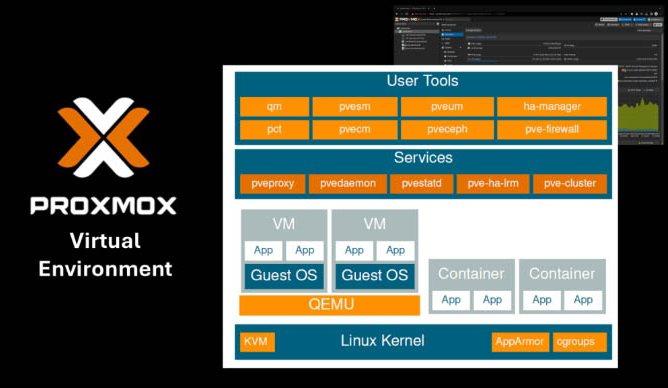Edge Computing
Edge cloud computing, referred to as edge cloud, is a cloud computing platform built on edge infrastructure based on the core of cloud computing technology and the capabilities of edge computing. A comprehensive elastic cloud platform with edge computing, network, storage, security and other capabilities is formed, and an end-to-end technical architecture of "cloud edge end three body collaboration" is formed with the central cloud and IoT terminals. By placing network forwarding, storage, computing, intelligent data analysis and other work at the edge processing, response latency is reduced, cloud pressure is alleviated, broadband costs are reduced, and cloud services such as network scheduling and computing power distribution are provided.
The infrastructure of edge cloud computing includes but is not limited to: distributed IDC, operator communication network edge infrastructure, edge side customer nodes (such as edge gateways) and their corresponding network environments.
Edge cloud computing has the characteristics of low network latency, support for massive data access, and elastic infrastructure. At the same time, the benefits of shortening spatial distance are not only to reduce transmission latency, but also to reduce the latency of various routing forwarding and network device processing in complex networks. In addition, due to the greatly reduced probability of network link contention, it can significantly reduce overall latency. Edge cloud computing adds distributed capabilities to traditional cloud centers by deploying some business logic on the edge and completing related data processing, which can greatly alleviate the pressure of transmitting data back to the center. Edge meta computing can also provide elastic virtualization capabilities based on edge location for computing, networking, storage, and truly achieve "cloud edge collaboration".
PVE virtual environment
AI Virtual Environment
LLM Application Development








